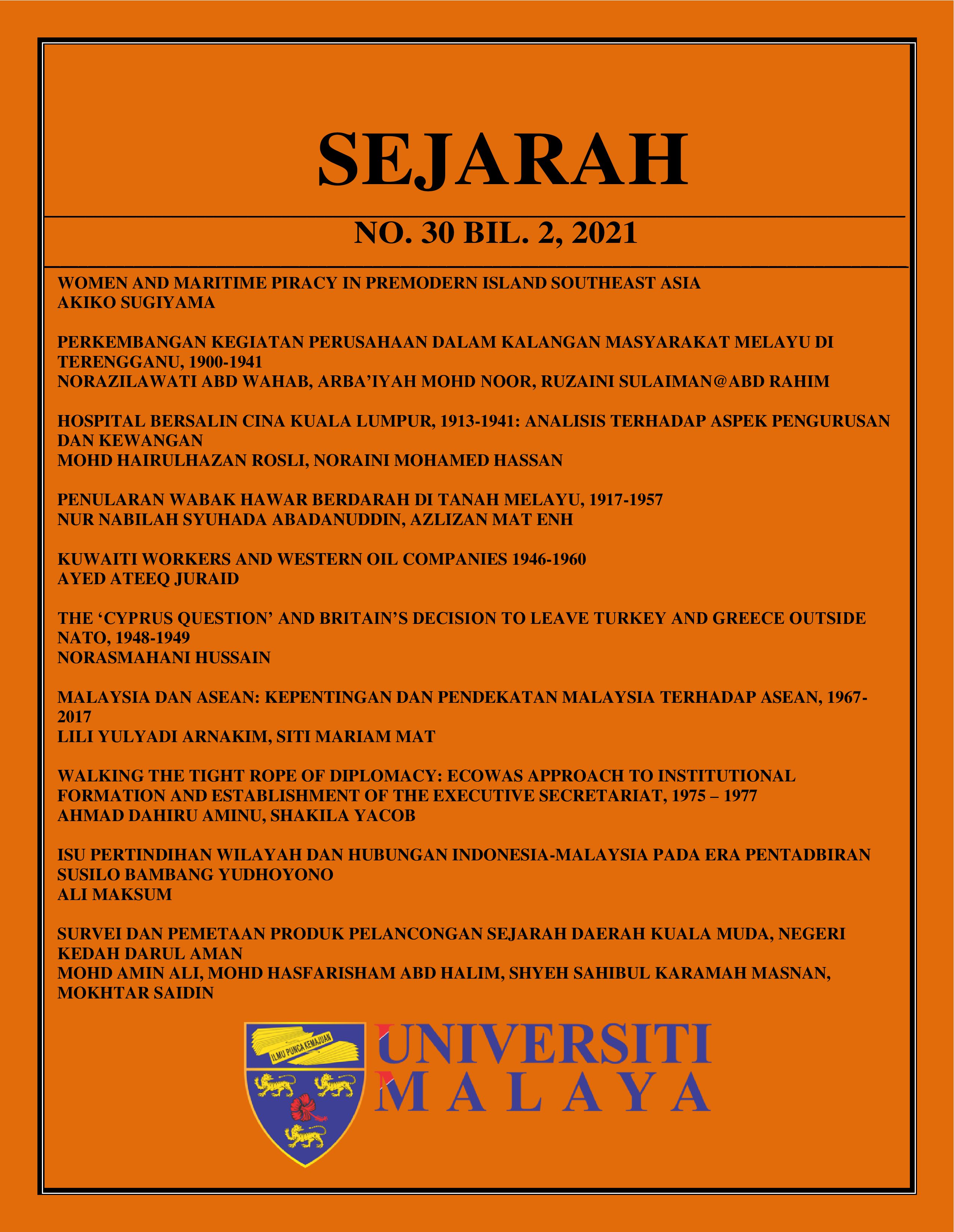WOMEN AND MARITIME PIRACY IN PREMODERN ISLAND SOUTHEAST ASIA
DOI:
https://doi.org/10.22452/sejarah.vol30no2.1Keywords:
Maritime Piracy, Pirates, Women, Gender, Island Southeast AsiaAbstract
The historiography of maritime piracy has largely concentrated on the experience of male seafarers and featured their reckless adventure, violence, and harsh life. In the male-focused historiography of seafaring and maritime piracy, women’s presence on the sea has been often reduced to the symbolic realm of the wooden figureheads carved into the bow of sailing vessels. Maritime historians over the past few decades have uncovered and rediscovered life stories of female seafarers and pirates across the ages and regions. Against this backdrop, this article reviews leading works primarily in English on statecraft and commerce in premodern island Southeast Asia, a historical and contemporary hub of maritime piracy. In a striking contrast with the world’s major seas and oceans, the region is marked by a relative absence of women pirates.This article is using qualitative method-data from archieves. The findings of this article suggests that in seafaring communities of island Southeast Asia were not pirates or did not become one because of complementarity in gender roles, social patterns based on bilateral kinship, and women’s prominence in local commerce. These observations effectively turn our attention away from the quest of women pirates to a broader examination on gender roles and gender relations in seafaring societies.
Received: 5 November 2021
Reviewed: 9 November 2021
Accepted: 6 December 2021


